There is only one Asian grocery store within a 5km radius of where I live at the moment. Actually the Asian grocery store is the only thing I have. No fishmonger, butcher or supermarkets. And me being car-less at the moment, meant all my ingredients had to come from the Asian grocery store.
I'm actually allergic to Eel, I get rashes everytime I have eel. So gave the dragonroll a miss.
These are the ingredients I used in my sushi:
- Sweet Egg Omelet
- Avocado
- Cucumber
- Faux crab meat mixed with Japanese Mayo
- Canned Tuna mixed with Japanese Mayo
- Seaweed
- Japanese Mayo
I have made sushi many times before, but learning to make it the 'proper way' was definitely a challenge and a lot of fun. Thanks to Audax of
Audax Artifex and Rose of
The Bite Me Kitchen for picking a great challenge!
The challenge is in four parts:-
Part 1: Making proper sushi rice – you will wash, rinse, drain, soak, cook, dress, and cool short grain rice until each grain is sticky enough to hold toppings or bind ingredients. Then you will use the cooked rice to form three types of sushi:
Part 2: Dragon sushi roll – an avocado covered inside-out rice roll with a tasty surprise filling
Part 3: Decorative sushi – a nori-coated rice roll which reveals a decorative pattern when cut
Part 4: Nigiri sushi – hand-shaped rice rolls with toppings
This challenge is all about learning how to make restaurant-grade sushi rice plus the techniques for making creative sushi !
PART 1 : SUSHI RICE (makes about 7 cups of cooked sushi rice)
Preparation time: 1¾ hours consisting of :-
Rinsing and draining rice: 35 minutes
Soaking rice: 30 minutes (includes 5 minutes making the vinegar dressing)
Cooking and steaming time: 25 minutes
Finishing the rice: 15 minutes
INGREDIENTS:
- 2½ cups uncooked short grain rice
- 2½ cups water
- For superior results use equal volumes of rice and water
Optional Ingredients- 3 inch (75mm or 15 grams) square dashi konbu (or kombu) (dried kelp seaweed) wipe with a damp cloth to remove white powder & cut a few slits in the sides of the kelp to help release its flavours
- 2½ teaspoons (12.5 mls) of sake (Japanese rice wine)
Sushi vinegar dressing
- 5 Tablespoons (75 mls) rice vinegar
- 5 Teaspoons (25 mls or 21 grams) sugar
- 1¼ Teaspoons (6.25 mls or 4.5 grams) salt
DIRECTIONS:
Rinsing and draining the rice
- Swirl rice gently in a bowl of water, drain, repeat 3-4 times until water is nearly clear. Don't crush the rice in your hands or against the side of the bowl since dry rice is very brittle.
- Gently place rice into a strainer and drain well for 30 minutes.
Soaking the rice- Gently place the rice into a heavy medium pot with a tight fitting lid (if you have a loose fitting lid use a piece of aluminium foil to make the seal tight).
- Add 2½ cups of water and the dashi konbu
- Set the rice aside to soak for 30 minutes, during this time prepare the sushi rice dressing.
Preparing the Rice Vinegar Dressing- Combine the rice vinegar, sugar and salt in a small bowl.
- Heat on low setting.
- Stir until the mixture goes clear and the sugar and salt have dissolved.
- Set aside at room temperature until the rice is cooked.
Cooking the rice
- After 30 minutes of soaking add sake (if using) to the rice.
- Bring rinsed and soaked rice to the boil.
- Reduce heat to the lowest setting and simmer, covered, until all the water is absorbed, 12-15 minutes. Do not remove the lid during this process. Turn off heat.
- Let stand with the lid on, 10-15 minutes. Do not peek inside the pot or remove the lid. During this time the rice is steaming which completes the cooking process.
Finishing the rice
- Moisten lightly a flat thin wooden spatula or spoon and a large shallow flat-bottomed non-metallic (plastic, glass or wood) bowl. Do not use metallic objects since the vinegar will react with it and produce sour and bitter sushi rice.
- Remove the dashi konbu (kelp) from the cooked rice.
- Use the spatula to loosen gently the rice and invert the rice pot over the bowl, gently causing the cooked rice to fall into the bowl in one central heap. Do this gently so as not to cause the rice grains to become damaged.
- Dressing the rice with vinegar
- Slowly pour the cooled sushi vinegar over the spatula onto the hot rice.
- Using the spatula gently spread the rice into a thin, even layer using a 45° cutting action to break up any lumps and to separate the rice. Don't stir or mash rice.
- After the rice is spread out, start turning it over gently, in small portions, using a cutting action, allowing steam to escape, for about a minute.
- Fanning & Tossing the rice
- Continue turning over the rice, but now start fanning (using a piece of stiff cardboard) the rice vigorously as you do so. Don't flip the rice into the air but continue to gently slice, lift and turn the rice occasionally, for 10 minutes. Cooling the rice using a fan gives good flavour, texture and a high-gloss sheen to the rice. The vinegar dressing will be absorbed by the hot rice. Using a small electric fan on the lowest speed setting is highly recommended.
- Stop fanning when there's no more visible steam, and all the vinegar dressing has been adsorbed and the rice is shiny. Your sushi rice is ready to be used.
- Cover with a damp, lint free cloth to prevent the rice from drying out while preparing your sushi meal. Do not store sushi rice in the refrigerator leave on the counter covered at room temperature. Sushi rice is best used when it is at room temperature.
* Tip: To make sushi rice: for each cup of rice use 1 cup of water, 2 Tbs rice vinegar, 2 tsp sugar, ½ tsp salt and 1 tsp sake. For superior results use equal volumes of rice and water when cooking the sushi rice since the weight of rice can vary. Weight of 2½ cups of uncooked rice is about 525 grams or 18½ ounces.
PART 2 : Dragon Rolls (also called Caterpillar Rolls)Preparation time: 30 minutes, plus 1¾ hours to make the sushi rice
Cooking time: about 5 minutes (grilling the eel)
Yield: 2 inside-out (uramaki) sushi rollsINGREDIENTS:
- 1 sheet 7”x8” (17.5cmx20cm) of toasted nori (dried seaweed sheets), cut into halves
- 1/2 Japanese cucumber
- 2 cups of prepared sushi rice
- Glazed Barbecued Eel (ungai) (about 3½ ounces or 100 grams)
- 1 Avocado
- Vinegared Water – ½ cup of water combined with a dash of rice vinegar
- Various small amounts of sauces to use as the flames of the dragon (or legs of a caterpillar)
Optional- 2 tablespoons (25 grams or 1 oz) Fish Roe (Fish eggs)
DIRECTIONS:
- Cut cucumber into strips ¼ inch (6mm) x 7” (175mm) long, then salt, rinse & dry the strips.
- Grill (broil) the eel for about 2-5 minutes until bubbling. Cut into two lengthwise strips.
- Halve, pit and peel the avocado. Cut the avocado halves into thin even 1/8 inch (3 mm) slices. Fan out the cut avocado into a 7 inch (175 mm) overlapping pattern.
- Cover bamboo mat with plastic wrap. Place a sheet of nori shiny side down, lengthwise, on the edge the mat.
- Moisten lightly your hands in the bowl of vinegared water.
- Place one cup of rice on the nori and gently rake your fingertips across grains to spread rice evenly. Do not mash or squash the rice onto the nori, the rice should appear loosely packed and be evenly distributed over the entire sheet, you should be able to see the nori sheet in a few places.
- Flip the rice-covered nori over (so the bare nori is now on top) and place on the edge of the mat closest to you.
- Arrange one of the eel strips across the length of the nori, not quite centred on it but a little closer to you. Place half the cucumber sticks next to the eel.
- Lift the edge of the mat closest to you with both hands, keeping your fingertips over the fillings, and roll the mat and its contents until the edge of the mat touches straight down on the nori, enclosing the fillings completely. Lift up the edge of the mat you're holding, and continue rolling the inside-out roll away from you until it's sealed. Tug at the mat to tighten the seal. If the rice doesn't quite close the roll add more rice in the gap and re-roll using the mat to completely cover the inside-out roll. Place the roll on a damp, clean smooth surface.
- Spread about 1 tablespoon of the optional fish roe along the entire top of the rice-covered roll. Using the plastic covered mat gently press the fish roe so it adheres to the rice.
- Slide a knife under one fan of avocado and transfer it onto the top of an inside-out roll. Gently spread out the avocado layer to cover the entire roll. Lay the plastic wrapped mat over the avocado-covered roll. Squeeze very gently to shape the roll.
- Lay a sheet of plastic wrap over the roll. Slice the roll into 6-8 equal, bite-sized pieces, wiping your knife with a damp towel before each slice. Discard the plastic wrap. Repeat the above to make one more roll.
- Arrange the cut pieces on a serving plate with the sauces so the finished dish appears as a dragon breathing fire and flames (or a caterpillar with many legs).
* Tip: The most common mistake is having too much filling the golden rule is less is more when it comes to making sushi it is easier to roll an under-filled roll than an over-filled roll.
* Tip: Dampen your knife with a moist lint-free towel before every cut – this prevents the sushi rice from sticking to your knife.
* Tip: Excellent videos on making Dragon Rolls
http://www.youtube.com/watch?v=pQZGRohVNFQ
http://www.youtube.com/watch?v=fo55iBN9FQs&feature=related
PART 3 : Spiral Sushi Roll

This is easiest 'decorative' sushi roll.
Preparation time: 15 minutes, plus 1¾ hours to make the sushi rice
Yield: One Roll, cut into 8 pieces
INGREDIENTS:
- 2½ cups prepared sushi rice
- 2 sheets of toasted nori, each sized 7”x8” (17.5cmx20cm)
- Six assorted fillings, each filling should be the size of a pencil (see note below)
DIRECTIONS:
- Join 2 sheets of nori by moistening the adjacent edges and overlapping them about ½ inch (12mm)
- Place this double sheet shiny side down on a rolling mat, part of the nori will extend beyond the mat.
- Using moist fingers place 2½ cups of rice on the nori and gently rake your fingertips across grains to spread rice evenly, leaving ¼ inch (6mm) nori showing on the both ends of the sheet. Do not mash or squash the rice onto the nori, the rice should appear loosely packed and be evenly distributed over the entire sheet, you should be able to see the nori sheet in a few places.
- Using your fingers form six grooves (in the same direction that you will be rolling the mat) at even intervals across the bed of rice. Make the first groove about 2 inches (50 mm) from the edge of the nori sheet. Form the grooves by pushing the rice away, do not mash or squash the rice, leave a loose one grain layer of rice in the bottom of the grooves. Level the areas between the grooves where you have pushed the rice.
- Place your fillings in the grooves. Fill the grooves a little higher than the surrounding rice bed.
- Then roll the sushi up from the edge closest to you, this will form a spiral pattern of nori, rice and fillings inside the roll.
- Slice into 8 pieces with a very sharp wet knife, wiping the blade with a damp cloth after each cut.
- Place the pieces on a platter and garnish.
NOTE:
Make each groove about a finger-width wide they will hold about 1-2 tablespoons of filling. Use fillings that compliment each other and are highly coloured. Use parboiled vegetables cut into strips, seafood, left over eel, smoked fish or chicken, whole cooked beans, edible flowers etc....
PART 4 : Nigiri Sushi

Nigiri sushi is the type of sushi most often made in sushi bars. In Japanese, nigiri means “squeeze”.
Preparation time: 30 minutes, plus 1¾ hours to make the sushi rice
Yield: 14-16 pieces of sushiINGREDIENTS:
- 2 cups prepared sushi rice
- 8 pairs of assorted toppings, 200 gms/7 ozs total of fish, meat or vegetables (see note below)
- 1 tablespoon Wasabi (paste, reconstituted powder) or any other paste to adhere topping to rice
Optional
- Garnishes such as Ginger (pickled), chilli strips, vegetables flowers etc
- Thin strips of nori or vegetables (for tying topping on)
DIRECTIONS:
- When handling sushi rice, make certain your hands are very clean. To keep the rice from sticking to our hands moisten your hands with vinegared water.
- Form nigiri sushi by scooping up a small amount (about 2 tablespoons) of rice with your forefinger and second finger of your right hand and placing it in your cupped left palm.
- Use the fingers and thumb of your right hand to form it into a long, narrow mound (about 2 inches x 1 inch wide or 50mm x 25mm) in your cupped palm.
- Press enough to make the rice hold firmly together. Place the nigiri on a damp cutting board flat side down. Don't let sushi touch or they'll stick to each other. At this point, you can cover the sushi with plastic wrap, and they'll keep at room temperature (not the refrigerator) for several hours.
- Smear a thin line of wasabi on top of the rice and place the topping piece on it. You may need to press the topping down lightly with your fingers and adjust the shape of the rice accordingly to form an attractive piece of nigiri sushi. If your topping is very loose like fish roe you can place a strip of nori (higher than the rice) around the nigiri and form 'battleship' sushi. The cavity that the nori forms holds the topping so it does not fall off.
- Garnish as desired and use strips of nori (or vegetable) to tie the topping to the nigiri if needed.
- It is customary to make nigiri sushi in pairs, so make two of each variety.
* Tips: A great video on making nigiri sushi
http://www.howcast.com/videos/270-How-To-Make-Sushi
A great web page on slicing fish for nigiri
http://www.sushilinks.com/sushi-recipes/how-to-buy-fish/index.html



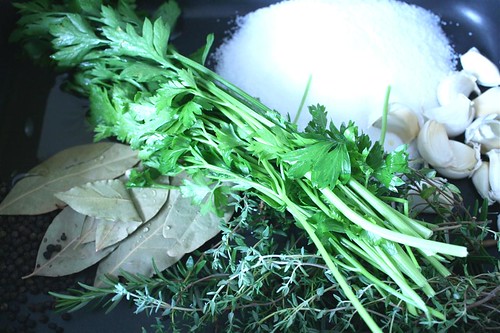
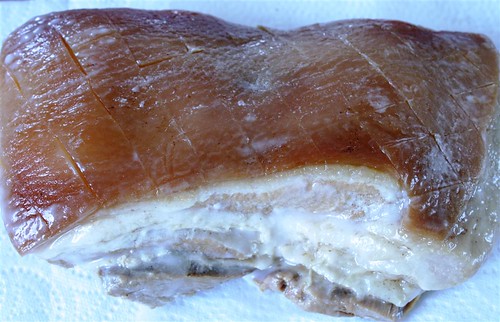
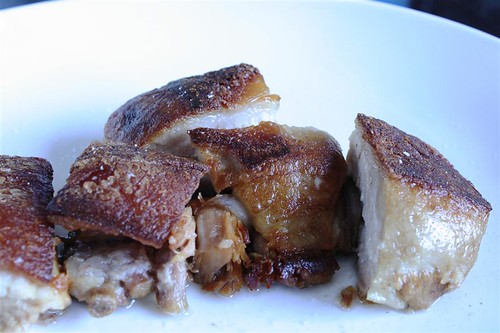
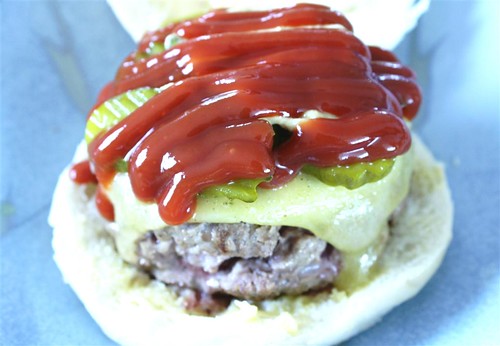

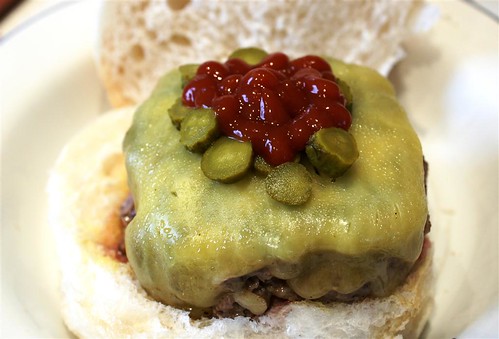
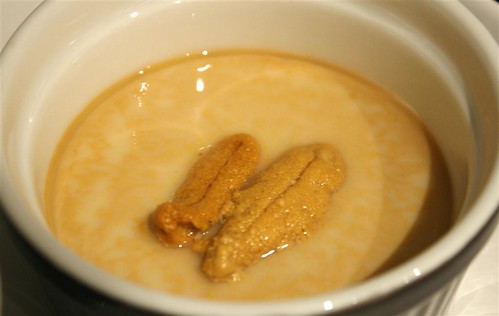
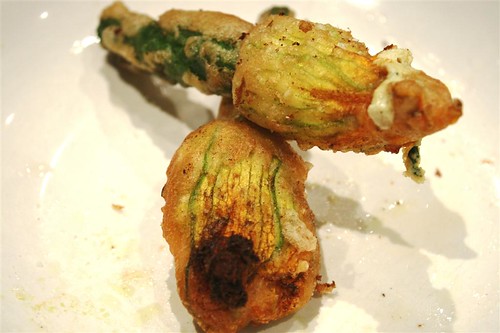


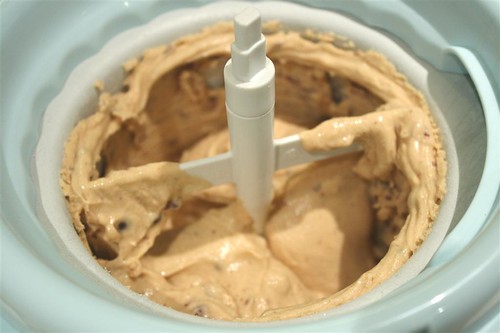

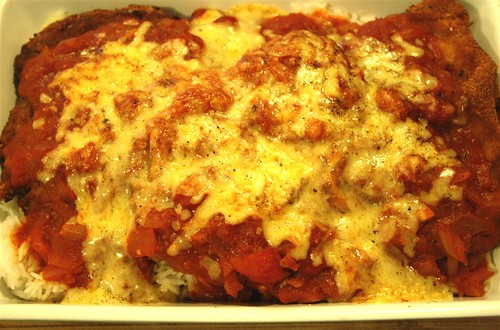

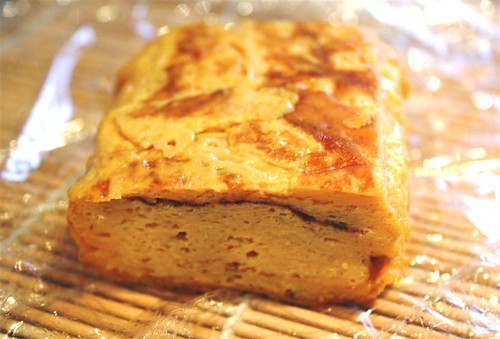








.JPG)
.jpg)
.jpg)
.jpg)
.JPG)




